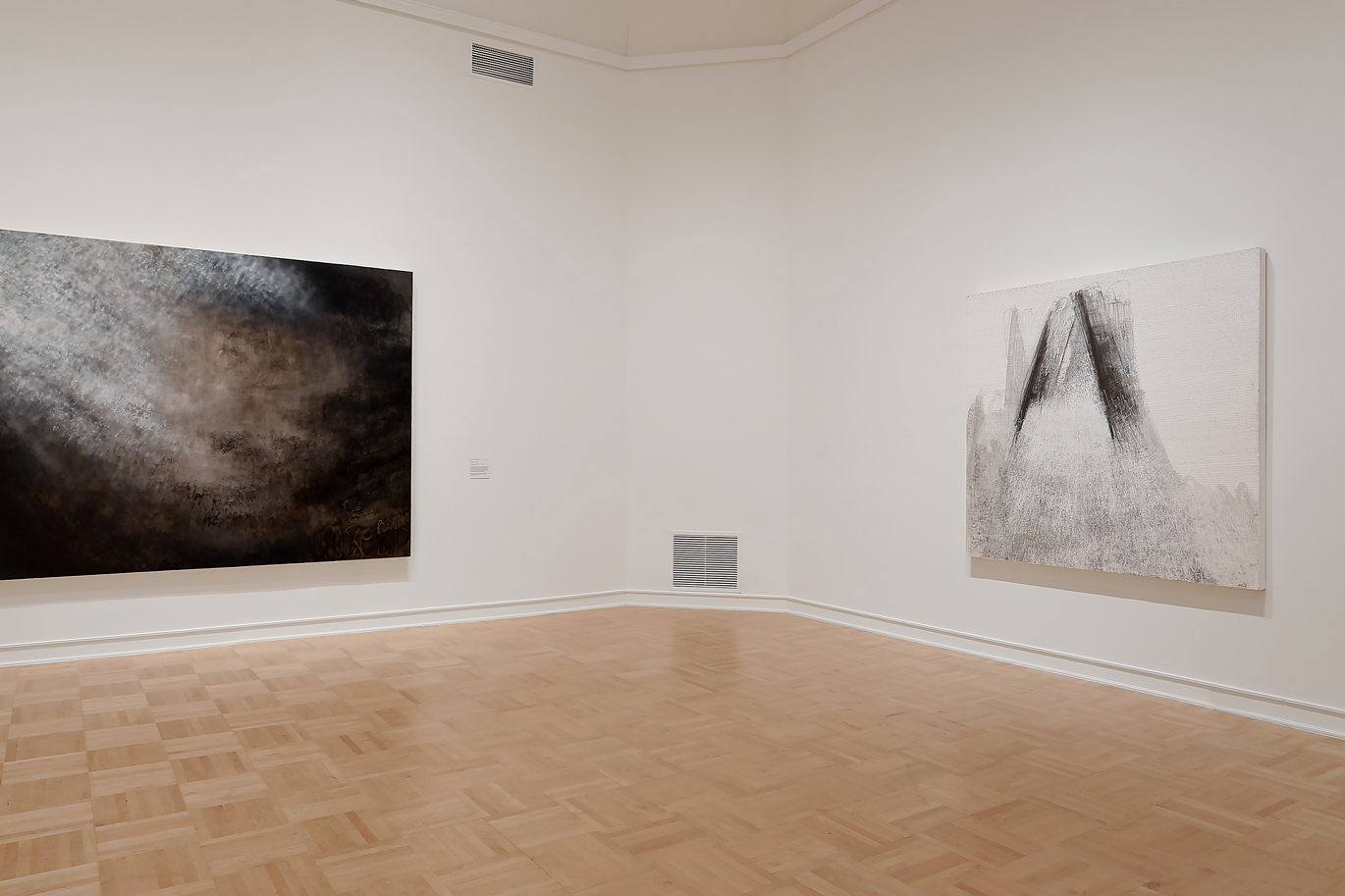- Summer 2021
Syllabus Description:
Art H 270 Syllabus Summer 2021.docx
Art/Identity/Politics: Issues of Representation in Contemporary Art
Instructor: Kolya Rice
Office: Art 302
E-mail: krice@uw.edu
Office Hours: by Zoom appointment
Teaching Assistant: Ananya Sikand
E-mail: asikand3@uw.edu
Office Hours: by Zoom appointment
Course Description:
This course is designed to introduce participants to various ways contemporary artists and art movements, primarily in the U.S., have explored the intersection of visual representation, identity (gender, ethnic, racial, sexual, intersectional) and politics, one of the most persistent themes in art since the 1960s. The course is "asynchronous," meaning participants will work through sequences of materials and assignments organized in weekly “modules” on Canvas according to their own individual schedules with a great degree of flexibility.
Course content will be delivered through a series of Panopto video lectures and coordinated readings where participants will explore how artists have contested dominant representations of gender, sexuality, race, ethnicity, as well as other minority “subjectivities,” and how artists have proposed alternatives for the representation of these constituencies. Online discussion forums, reflective papers on readings, online quizzes and assignments have been designed to engage students with course topics, foster creative and critical thinking, allow dialogue concerning the stakes involved in visual representations, and allow instructor assessment and evaluation of participants’ progress.
Required Readings:
There is no text for this course. Pdf files of course readings are posted on Canvas. Each weekly “module” on Canvas contains the course readings for that week. For most readings, I will provide an introduction and “reading guides” that will help you focus on and engage with key ideas.
Student Responsibilities:
3 quizzes: (45% of overall grade)
Each quiz will require students to write short answers and longer essays on topics covered in the Panopto lectures and readings. These are open notes quizzes—you may return to the lectures and readings when composing your answers. Each quiz will only cover the topics for that 3 week section of the course. In other words, they are not comprehensive. These quizzes will be graded on a 100 point scale.
Summary/reflective essays (30%)
To ensure that participants have on strong comprehension of key ideas from course readings and lectures, and to allow me to offer feedback, students will write summary/reflective essays. See prompts on Canvas. These essays will be graded on a 10-point scale.
Participation in weekly discussion forums (25%)
The topics of this course lend themselves to rich discussion and manifold perspectives. Candidly, this is often difficult to achieve in an online course. My hope is that you will engage with each other, respectfully and thoughtfully in the weekly online discussion forums. Each week I will provide you with specific topics, ideas and issues raised in the lectures and reading. Each student will be required to make one post in the discussion forum before the end of the day on Wednesdays. Once you have posted, you will be able to see others students’ posts. You are required to respond to at least one of these posts from another student by the end of the day on Fridays. You are welcome and encouraged to post/respond as many times as you desire. Your posts/responses will be graded on a 10-point scale.
VeriCite anti-plagairism software:
Notice: The University has a license agreement with VeriCite, an educational tool that helps prevent or identify plagiarism from Internet resources and work submitted by previous students of this course. I will use the service in this class; all assignments and quizzes you submit will be checked by VeriCite. The VeriCite Report will indicate the amount of original text in your work and whether all material that you quoted, paraphrased, summarized, or used from another source is appropriately referenced. All instances of intentional plagiarism will result in zero credit on the assignment, and a report of indicating academic dishonesty to the School of Art and the University of Washington. For further information, visit: https://itconnect.uw.edu/learn/tools/canvas/canvas-help-for-instructors/assignments-grading/vericite/plagiarism-faqs/
Late papers and discussion post policy:
If you have a serious conflict or emergency, please talk to me about it in advance of the due date and I will work with you. Papers will be marked down 10% for each day they are late and will not be accepted more than five days following the due date unless you have requested and received an extension. Discussion posts will be marked down 20% for each day they are late and will not be accepted if more than three days late unless you have requested and received an extension.
The 10-point scale corresponds to the following grades:
10 4.0 A
9 3.4 B
8 2.7 B-
7 1.7 C/C-
6 1.0 D
5 and below 0.0 F
The 100-point scale corresponds to the following decimal/letter grades:
95-100 4.0-3.9 A
90-94.99 3.8 - 3.5 A-
87-89.99 3.4 - 3.2 B+
83-86.99 3.1 – 2.9 B
80.00-82.99 2.8 - 2.5 B-
77-79.99 2.4 - 2.2 C+
74-76.99 2.1 - 1.9 C
70.00-73.99 1.8 - 1.5 C-
67-69.99 1.4 - 1.2 D+
64-66.99 1.1 – 0.9 D
60-63.99 0.8-0.7 D-
Below 60 0.0 F
Course Outcomes:
Learn Actively - Learning is a personal, interactive process that results in greater expertise and a more comprehensive understanding of the world.
- Distinguish formal qualities that separate different stylistic periods of photography
- Employ interdisciplinary methods of visual analysis
- Explore the relationships between photography and its social, cultural, political, historical and/or religious contexts
- Develop interdisciplinary knowledge to examine how power and privilege manifest in culture and investigate how systems of power are related to class, race, gender, religion, national origin, sexual orientation, and other identities
- Identify strategies in visual representation for challenging systems of power and privilege
- Apply prominent theories of photography
Think Critically, Creatively and Reflectively - Reason and imagination are fundamental to problem solving and critical examination of ideas.
- Use a variety of approaches to think critically about and reflect on personal and cultural assumptions and biases, and to consider alternative views regarding issues of power and inequality as they relate to issues of the visual representation of sexuality, ethnicity, gender, and religion
- Identify key art historical issues, determine the assumptions underlying arguments, and recognize the way that historical and cultural context affect meaning
- Explore and articulate various ways that photography represents cultural identity which is shaped by varying degrees of power and privilege, in relation to both a local context and interconnected world
- Investigate and critique prominent theories of photography
Communicate with Clarity and Originality - The ability to exchange ideas and information is essential to personal growth, productive work, and societal vitality.
- Discuss multiple interpretations of course content as it relates to structures of power, privilege and inequality using discipline-appropriate concepts and theories, and articulate how and why these structures inform personal, professional, and social identities
- Articulate points of view while using details of a photograph and/or its context as evidence
- Demonstrate proficiency to conduct guided research using a wide variety of materials from multiple points of view
- Use appropriate sources and technologies to gather and present information
- Question and reflect on assumptions, statements and information made throughout the course by the text, readings, instructors, and other students
- Demonstrate effective use of interdisciplinary methodologies and theories of photography employed in the course to visually analyze photographs
- Contribute ideas and information individually and in a group dynamic



